Meskipun ada kemajuan besar dalam teknologi nirkabel, kabel ethernet masih merupakan cara tercepat dan paling andal untuk membangun koneksi jaringan. Kabel ini merupakan tulang punggung infrastruktur jaringan, karena kuat terhadap keausan. Namun, penting untuk diketahui bahwa tidak semua kabel ethernet identik. Produsen memproduksi kabel ini dalam kategori berbeda sebagaimana ditetapkan oleh standar ANSI dan ISO.
Kategori yang berbeda adalah Cat5e, Car6, Cat6a, Cat7, dan Cat8. Kabel-kabel ini dapat memiliki ketebalan kabel, pelindung, dan kualitas tembaga yang berbeda-beda, yang membuatnya lebih cepat atau lebih lambat. Mempelajari perbedaan antara kabel ethernet ini dan faktor-faktor yang memengaruhi kecepatannya sangat penting untuk memastikan jaringan yang sempurna. Dalam panduan lengkap tentang kabel Ethernet ini, kita akan membahas semua aspek ini untuk membuat keputusan pembelian yang logis dan tepat dalam proyek kita berikutnya. Mari kita mulai!
Daftar isi
- 1. Apa itu Kabel Ethernet?
- 2. Kabel Ethernet: Siapa yang Mengkategorikannya?
- 3. Jenis Kabel Ethernet
- 4. Kinerja dan Aplikasi
- 5. Kabel Terlindung vs. Kabel Tak Terlindung
- 6. Cara Memilih Kabel Ethernet yang Tepat
- Nomor telepon 7. Ringkasan dan Rekomendasi
- 8. 5 Pertanyaan Terkait yang Mungkin Ditanyakan Pembaca
- 8.1 1. Apa perbedaan antara kabel Cat5e dan Cat6?
- 8.2 2. Bagaimana dapatkah saya mengetahui apakah kabel Ethernet terlindungi?
- 8.3 3. Bisa Saya menggunakan kabel Ethernet untuk koneksi internet dan jaringan lokal?
- 8.4 4. Melakukan Kabel Ethernet memengaruhi kecepatan internet?
- 8.5 5. Berapa lama kabel Ethernet dapat bertahan sebelum kehilangan kualitas sinyal?
Apa itu Kabel Ethernet?
Bob Metcalfe, yang bekerja di Pusat Penelitian Xerox Palo Alto, menciptakan sistem ethernet pertama pada tanggal 22 Mei 1973. Sistem ini merupakan cara untuk berkomunikasi secara digital antara stasiun kerja dan printer. Ia mengubah nama proyeknya yang sukses, “Jaringan Alto Aloha,” ke Ethernet. Kata tersebut merujuk pada eter bercahaya atau “Ether,” yang dianggap sebagai media cahaya alam semesta pada saat itu. Maju cepat beberapa tahun ke depan, kabel yang menghubungkan perangkat ethernet, versi lanjutan dari “Alto Aloha Network,” mendapatkan nama kabel ethernet.
Kabel Ethernet: Siapa yang Mengkategorikannya?
Seiring dengan semakin berkembangnya standarisasi dunia untuk meminimalkan pemborosan dan meningkatkan kolaborasi demi kemajuan pesat, diperlukan sebuah organisasi untuk mengatur teknologi kabel ethernet. ANSI (American National Standards Institute) dan ISO (International Organization for Standardization) adalah dua organisasi yang menetapkan standar untuk kabel ethernet. Ada dua standar utama yang secara langsung membahas kategori kabel ethernet:
- ANSI/TIA-568:Membahas kategori kabel ethernet, jarak, skema pinout, topologi kabel, lebar pita sinyal, insertion loss, dan crosstalk. Ia juga menyediakan panduan instalasi untuk performa maksimal.
- Bahasa Indonesia: ISO/IEC-11801:Mencakup berbagai kategori kabel, persyaratan kinerja, dan praktik instalasi, memastikan kompatibilitas, interoperabilitas, dan kinerja untuk jaringan Ethernet.
Institute of Electrical and Electronics Engineers (IEEE) mendefinisikan aspek elektronik dari jaringan. Standar IEEE 802.3 membahas elemen konfigurasi jaringan ethernet dan juga menyajikan komunikasi antara perangkat pada jaringan yang sama. Standar ini terpisah dari persyaratan karakteristik kabel fisik.
Jenis Kabel Ethernet
Kabel Ethernet memastikan konektivitas berkecepatan tinggi antara perangkat yang berkomunikasi secara digital. Kabel Ethernet Kategori 1 dan 2 tidak disebutkan dalam standar modern, karena hanya berfungsi untuk sirkuit suara, bukan data. Kategori 3, 4, dan 5 adalah kategori yang ditetapkan dengan baik menurut standar kabel Ethernet modern, tetapi kecepatannya yang terbatas dan kerentanannya terhadap ketidakakuratan elektromagnetik membuatnya usang. Berikut adalah lima kabel Ethernet yang tersedia yang melayani koneksi Ethernet modern dengan konektivitas berkecepatan tinggi:

Kategori 5
Cat5e adalah kabel ethernet Kategori 5 Enhanced yang dikomersialkan pada tahun 2001, hampir lima tahun setelah peluncuran kabel Cat5. Cat5e menggunakan kabel tembaga 24AWG, biasanya 4 pasang kabel terpilin (8 kabel) per kabel. ANSI/TIA menyebutnya enhanced karena kecepatan transfer datanya 10x lebih cepat dan kemampuannya untuk memastikan transfer data pada panjang kabel yang lebih panjang tanpa crosstalk. Cat5e adalah kabel yang ideal untuk jaringan rumah karena rasio harga/kinerjanya yang sangat baik untuk kecepatan Gigabit. Namun, banyak pengguna yang beralih ke Cat6 untuk ketahanan yang lebih baik di masa mendatang, terutama dengan semakin umum digunakannya koneksi internet berkecepatan tinggi.
Kategori 6
Pada tahun 2002, kabel Cat5e digantikan oleh kabel Cat6. Kabel ethernet ini menyediakan kompatibilitas mundur dengan standar sebelumnya.Membedakan kabel Cat5e dan Cat6 secara fisik dari luar tidak mungkin dilakukan karena konektor RJ45 dan warna kabelnya yang serupa. Pengguna dapat membaca deskripsi yang dicetak pada selubung kabel oleh produsen untuk membedakannya. Kabel di dalam kabel Cat6 lebih tebal, dengan AWG 23. Hal ini memungkinkannya mentransfer lebih banyak data dan berkinerja lebih baik daripada Cat5e. Lilitan pada pasangan kabel lebih kencang, dan spline plastik membentang di antara pasangan kabel untuk meningkatkan pemisahan dan crosstalk.
Cat6a
Cat6 adalah versi tambahan dari kabel ethernet Cat6. Satu-satunya perbedaan adalah spline, jaket, dan bahan isolasi yang lebih tebal, yang menyebabkan Cat6a memberikan ketahanan yang lebih baik terhadap masalah crosstalk. Ketebalan kabelnya sama, AWG23. Ketebalan keseluruhan kabel bertambah diameternya. Ketebalannya yang bertambah menyebabkan pembatasan tekukan. Biasanya, radius tekukan berbanding lurus dengan diameter kabel. Merutekan kabel ethernet Cat6a sulit dan membutuhkan lebih banyak ruang daripada kabel Cat6.
Kucing 7
Diluncurkan pada tahun 2010, kabel Cat7 membawa kabel ethernet Cat6 ke tingkat berikutnya. Alih-alih bahan pelindung biasa, Cat7 melindungi masing-masing pasangan kabel untuk lebih meningkatkan ketahanan terhadap crosstalk. Kabel ini masih menggunakan konfigurasi pasangan kabel tembaga 4-23 atau 22 AWG yang sama. Tujuan utama kabel Cat7 adalah untuk memastikan ketahanan sistem jaringan di masa mendatang untuk lingkungan yang memerlukan koneksi berkecepatan tinggi. Kabel ini juga bekerja dengan sangat baik di lingkungan dengan gangguan tinggi, tempat EMI dapat secara langsung memengaruhi kemampuan transfer data kabel. Kategori kabel ethernet Cat7 didefinisikan dengan baik dalam standar ISO/IEC 1181.
Kategori 8
Desain kabel Cat8 menargetkan pusat data dan lingkungan perusahaan di mana koneksi berkecepatan sangat tinggi sangat penting untuk kinerja. Kelompok kerja TR43 di bawah ANSI/TIA 568-C.2-1 menyelesaikan desainnya pada tahun 2016. Ini adalah kabel ethernet tercanggih untuk jaringan. Pengguna dapat menemukan kabel Cat8 dengan ukuran kawat mulai dari 22 hingga 26 AWG. Kabel ini memiliki konduktor tembaga berkualitas tinggi untuk konektivitas berkecepatan tinggi. Kabel ini memiliki pelindung yang lebih tebal daripada kabel Cat7 dan Cat6. Tidak ada kabel Cat8 yang tidak berpelindung.
Kinerja dan Aplikasi
Kabel Ethernet merupakan tulang punggung sistem jaringan apa pun. Kabel ini harus menyediakan konektivitas yang sempurna dengan meminimalkan gangguan dan kerugian resistansi kabel. Semua iterasi desain kabel Ethernet menargetkan peningkatan kecepatan, lebar pita, dan jarak. Mari kita lihat faktor apa saja yang memengaruhi kabel Ethernet dan perbedaan kinerja berdasarkan kategori kabel.
Faktor-Faktor Yang Mempengaruhi Kinerja Kabel Ethernet
● Induksi Elektromagnetik (EMI)
EMI dapat terjadi dalam aplikasi rumah tangga dan industri. EMI dihasilkan oleh kabel tegangan tinggi yang melewati dekat kabel ethernet. Pemanas induksi dan penggerak motor merupakan beberapa peralatan penghasil EMI terburuk. EMI dapat menyebabkan paket yang berjalan di kabel ethernet terputus atau menyebabkan kesalahan. EMI juga dapat menyebabkan variasi data, yang menyebabkan gangguan pada koneksi data.
● Redaman
Sinyal ethernet menggunakan listrik untuk mentransfer data. Kekuatan sinyal dapat berkurang seiring bertambahnya jarak kabel ethernet. Resistensi, kapasitansi, induktansi, dan efek kulit semuanya dapat menyebabkan pelemahan sinyal. Kabel kelas atas menggunakan beberapa teknik pelindung dan tembaga murni untuk mengurangi pelemahan secara signifikan.
● Pembicaraan silang
Protokol komunikasi Ethernet menggunakan beberapa saluran untuk mengirimkan data. Saluran-saluran ini biasanya melewati beberapa pasang kawat tembaga pada kabel Ethernet.Namun, jarak kabel yang terlalu dekat dapat menyebabkan interferensi antara saluran-saluran ini. Penurunan kualitas sinyal yang disebabkan oleh interferensi ini disebut efek cross-talk.
● Kehilangan Pengembalian
Dalam jaringan gigabit, return loss adalah rasio sinyal yang disuntikkan dari pemancar ke sinyal yang kembali ke sumber. Hal ini disebabkan oleh diskontinuitas material dan ketidaksesuaian impedansi. Hal ini biasanya terjadi ketika kabel terlalu tertekuk atau tertekuk.
Perbandingan Kinerja pada Kategori Kabel Ethernet
Kabel Ethernet memiliki kinerja yang bervariasi. Kategori kabel Ethernet penting dalam aplikasi berkecepatan tinggi seperti pusat data dan aliran permainan kompetitif. Perbedaan ketebalan kabel, kekencangan pasangan terpilin, selubung, dan pelindung memengaruhi kinerja kabel Ethernet dalam menyalurkan data.
Kecepatan transfer data kabel dapat lebih tinggi dari nilai standar yang disebutkan. Nilai di bawah ini adalah kecepatan minimum yang akan ditawarkan kategori kabel pada lebar pita dan jarak tertentu. Namun, memperpendek jarak atau menggunakan kabel berkualitas sangat tinggi dapat memengaruhi kecepatan. Mari kita bandingkan kinerja kabel ethernet menurut kategori ANSI/TIA 568.2-D:
Kategori 5
Kecepatan: 1000 Mbps
Lebar pita: 100MHz
Jarak: 100 meter
Kabel ethernet Cat5e mencapai kecepatan ini karena desainnya yang lebih baik dibandingkan dengan Cat5, yang hanya mendukung 100 Mbps. Kabel ini merupakan kabel pertama yang mencapai batas 1Gbps. Kabel ini berpotensi memastikan penerapan WiFi dengan konektivitas multiperangkat, seperti arus lalu lintas yang lebih tinggi, dapat terjadi di jalan yang lebih lebar. 100MHz menyediakan lebih banyak ruang bagi sinyal untuk bergerak, yang secara langsung memengaruhi kecepatan.
Kategori 6
Kecepatan: 1000 Mbps
Lebar pita: 250MHz
Jarak: 100 meter
Peningkatan lain pada desain kabel ethernet Cat5e, dengan lebar pita yang lebih lebar, menghasilkan kecepatan yang lebih tinggi. Kabel Cat6 dapat menangani internet hingga 10 Gigabit untuk jarak hingga 55 meter, yang menjadikannya pilihan yang terjangkau untuk aplikasi jarak pendek.
Cat6a
Kecepatan: 10.000 Mbps
Lebar pita: 500MHz
Jarak: 100 meter
Cat6a, versi kabel Cat6 yang disempurnakan, menyediakan lebar pita yang lebih lebar, yaitu 500 MHz. Kabel ini memungkinkan internet 10 Gigabit pada jarak total 100 meter. Kabel ini menggunakan konektor yang mirip dengan kabel ethernet Cat6, dengan dukungan penuh untuk kecepatan transmisi 10GBASE-T.
Kucing 7
Kecepatan: 10.000 Mbps
Lebar pita: 600MHz
Jarak: 100 meter
Berkat pelindung dan material kabel yang lebih baik, kabel ethernet Cat7 menyediakan pita 600 MHz, yang memungkinkan peningkatan kapasitas data, jangkauan frekuensi, kecepatan data, dan integritas sinyal. Lebar pita yang lebih lebar memastikan lebih sedikit gangguan dan distorsi dalam transfer data. Kabel ini juga dapat mendukung daya 90W melalui ethernet atau PoE.
Kategori 8
Kecepatan: 40.000 Mbps
Lebar pita: 2000MHz
Jarak: 30 meter
Jika Anda mencari sistem jaringan yang sangat tahan masa depan, maka Kabel ethernet Cat8 cocok. Kabel ini berlebihan untuk aplikasi rumahan tetapi ideal untuk pusat data. Kecepatannya 40 Gbps dengan lebar pita frekuensi ultra-tinggi 2000MHz terlalu berlebihan untuk sebagian besar aplikasi modern. Kabel ini memiliki kecepatan 40Gbps yang terjamin andal dan dapat mencapai jarak hingga 30 meter. Diameter kabel yang besar juga dapat mendukung transmisi daya melalui ethernet, yang menyediakan daya 200W.
| Kategori | Kecepatan (Mbps) | Lebar pita (MHz) | Jarak (meter) | Fitur Utama |
| Kategori 5 | 1000 | 100 | 100 | Pertama yang mencapai 1 Gbps, cocok untuk WiFi multi-perangkat |
| Kategori 6 | 1000 | 250 | 100 | Bandwidth yang lebih luas untuk kecepatan yang lebih cepat mendukung 10 Gbps untuk jarak pendek |
| Cat6a | 10.000 | 500 | 100 | Cat6 yang ditingkatkan mendukung 10 Gbps untuk jarak yang lebih jauh |
| Kucing 7 | 10.000 | 600 | 100 | Peningkatan perisai dan material kawat untuk mendukung kapasitas data PoE yang lebih tinggi |
| Kategori 8 | 40.000 | tahun 2000 | 30 | Ideal untuk pusat data mendukung 40 Gbps untuk jarak pendek, PoE daya tinggi. |

Aplikasi Berdasarkan Kategori Kabel Ethernet
Memilih kategori yang tepat berdasarkan kebutuhan Anda dapat menghemat uang dan membuat proyek Anda efisien. Mudah untuk memilih kabel Cat8 untuk semua tujuan ini, tetapi seperti yang kita ketahui, keterbatasan jarak dan masalah perutean muncul pada kabel Cat8. Jadi, mari kita bahas beberapa aplikasi dan kategori kabel yang sesuai:

● LAN atau Game Online
Selama kompetisi game kompetitif, tuntutan akan kecepatan dan waktu respons berada pada puncaknya! Penyelenggara dan manajemen acara tersebut memastikan bahwa perangkat keras mereka bekerja pada potensi maksimalnya untuk memungkinkan pemain tampil sebaik mungkin di kompetisi terkenal di dunia seperti The International (TI), The FNCS Global Championship, dan LoL Worlds, yang memiliki total hadiah melebihi $25 juta.
Sebaiknya gunakan jaringan kabel ethernet berkabel dengan koneksi berkecepatan tinggi dengan distorsi sinyal atau gangguan minimum pada taruhan tinggi tersebut. Kami sarankan untuk menggunakan kabel Cat7. Kabel ini mudah dirutekan dan menawarkan kinerja yang baik, ideal untuk bermain game.
● Tinggi-Definisi Video Streaming
Untuk streaming video definisi tinggi, HDMI 2.1 menyediakan kecepatan transfer data maksimum untuk streaming video 8K, resolusi tertinggi yang tersedia. Jika HDMI 2.1 memberikan kecepatan 100 Mbps, ia dapat berjalan pada kecepatan 60 Mbps. Ia menetapkan patokan untuk kecepatan jaringan kita. Selain itu, jika streaming resolusi 4K diperlukan, bandwidth 25 Mbps sudah cukup.
Untuk Streaming 8K: Kabel Ethernet Kategori 6a
Untuk Streaming 4K: Kabel Ethernet Kategori 5e
● Masa depan Pembuktian Pusat Data
Pusat data dan ruang server memiliki sejumlah besar data yang melewati kabel ethernet mereka, dan redaman crosstalk return loss dan EMI dapat memengaruhi kinerja secara kritis. Oleh karena itu, pendekatan yang ideal adalah melengkapi mereka dengan teknologi terkini agar tahan terhadap masa depan. Kabel Cat8 sangat cocok untuk tahan terhadap masa depan karena dapat menyediakan 40Gbps dan jarak 2000 MHz 30 meter.
● Perusahaan Jaringan: Bisnis
Karyawan di jaringan kantor perusahaan atau bisnis jarang memerlukan transfer data, streaming, atau aplikasi latensi rendah. Kabel ethernet Cat5e memiliki bandwidth yang cukup untuk mendukung transfer data berkecepatan tinggi. Perbedaan antara kabel Cat8 dan Cat5e hampir tidak terlihat dalam jadwal kerja harian.
Kabel Terlindung vs. Kabel Tak Terlindung
Kabel Ethernet Terlindung
Kabel melindungi kabel dari faktor eksternal seperti kelembapan, cairan, panas, dan keausan fisik. Akan tetapi, kabel tetap tidak dapat melawan EMI dan crosstalk yang tidak terlihat. Kabel modern menawarkan teknologi twister pair yang mengurangi interferensi secara alami, tetapi kabel tetap rentan terhadap ancaman yang tidak terlihat ini. Kabel modern dilengkapi dengan perlindungan terlindung untuk mengurangi interferensi dari lingkungan. Hal ini menghasilkan kinerja yang lebih baik dan lebih konsisten.Namun, ada beberapa jenis pelindung, dan produsen kabel akan menggunakan istilah berikut untuk menjelaskan pelindung pada kabel ethernet:

STP: Pasangan Terpilin Standar
U/FTP: Tidak ada Pelindung Keseluruhan/Pasangan Terpilin yang Digagalkan
F/UTP: Pelindung Foil Keseluruhan/Pasangan Terpilin Tanpa Pelindung
S/FTP atau S/STP: Pelindung Foil Keseluruhan dan Pasangan Terpilin Foil Individual
| Kelebihan | Kontra |
| ● Melindungi dari Cairan, Panas, dan Keausan Fisik | ● Lebih Mahal |
| ● Performa Lebih Baik Pada Tekanan Tinggi (EMI) Dan Crosstalk | ● Lebih Kaku Dan Kurang Fleksibel |
| ● Memberikan Kualitas Sinyal yang Konsisten | ● Lebih Lambat Saat Tidak Ada EMI |
| ● Ideal untuk Masa Depan | ● Diameter Besar Mungkin Memerlukan Lebih Banyak Ruang |
Kabel Ethernet Tanpa Pelindung
Untuk koneksi jaringan di rumah atau di lingkungan perusahaan, ada kemungkinan kecil untuk mengalami masalah EMI atau crosstalk yang memerlukan perlindungan foil. Kabel ethernet tanpa pelindung mudah dirutekan dan memiliki rasio harga/kinerja yang sangat baik. Perbedaan kecepatan karena faktor eksternal terlihat jelas untuk aplikasi semacam itu. Tanpa EMI, kabel pasangan terpilin tanpa pelindung (USP) berkinerja lebih baik daripada kabel SSTP.
| Kelebihan | Kontra |
| ● Lebih Mudah Diakses Untuk Dirutekan Dan Dipasang | ● Penurunan Kinerja Pada EMI Tinggi |
| ● Hemat Biaya untuk Lingkungan Rumah dan Kantor | ● Potensi Crosstalk |
| ● Setelan Koneksi Tanpa Gangguan Berarti |
|
| ● Berkinerja Lebih Baik di Lingkungan Non-EMI |
|
CABLETIME menyediakan berbagai macam kabel FTP, S/STP, dan UTP bagi pengguna yang membutuhkan kabel untuk bekerja di lingkungan yang unik. Mereka secara cerdas memanfaatkan aspek terpenting dari kabel berpelindung atau tidak berpelindung untuk membuat produk yang menarik bagi semua jenis pengguna. Jajaran produk mereka meliputi kabel kategori Cat6, Cat7, dan Cat8 yang mematuhi kode dan standar internasional. Kabel ethernet yang ditambal di situs web mereka dilengkapi dengan penjepit dan segel yang canggih.
Cara Memilih Kabel Ethernet yang Tepat
Pembaca kami harus mengikuti langkah-langkah ini untuk menemukan kabel ethernet yang tepat untuk skenario penggunaan mereka, yang akan memastikan umur panjang.

Langkah 1: Seberapa Cepat Penyedia Layanan Internet (ISP) Anda
Pengguna rata-rata di AS, Eropa, atau bagian lain dunia hanya akan memanfaatkan sebagian kemampuan kecepatan kabel ethernet 40Gbps. Kecepatan ISP tertinggi yang tersedia adalah 8Gbps, yang ditawarkan oleh Google Fiber di AS. Ini berarti Anda dapat mengunduh game berukuran 10GB dalam 10 detik. Komputer konsumen memiliki keterbatasan yang menyebabkannya mengunduh dengan kecepatan yang jauh lebih lambat daripada yang disediakan Google. Jadi, bagi pengguna internet rata-rata, Cat6a dan Cat7 berarti rumah Anda siap menghadapi masa depan dengan kecepatan internet yang tinggi.
Langkah 2: Apakah Anda Membutuhkan Kabel Pendek atau Panjang?
Jika Anda akan merutekan kabel melalui dinding atau baki, pertimbangkan untuk menggunakan kabel yang mendukung kecepatan pada panjang yang lebih panjang dengan kemampuan manuver yang tinggi. Menggunakan Cat8 untuk merutekan kabel ke soket sulit dilakukan karena masalah pembengkokan. Namun, untuk pusat data, hal itu mungkin berbeda. Anda memerlukan ketahanan masa depan dan kecepatan tinggi di seluruh koneksi jarak pendek antara router dan switcher untuk ruang server dan pusat data.
Melangkah 3: Kabel Patch atau Kustom
Bergantung pada rute atau aplikasi Anda, putuskan antara kabel patch dan kabel massal khusus. Kabel patch merupakan pilihan yang bagus jika Anda merutekan kabel dari soket ke router WiFi Anda. Jika tidak, pelajari cara menyambung kabel ethernet untuk perutean jarak jauh, karena Anda akan memerlukan kabel massal.
Langkah 4: Pertimbangkan Lingkungan untuk Terlindung atau Tidak Terlindung
Memilih antara kabel berpelindung dan tak berpelindung memerlukan pertimbangan kelebihan dan kekurangan masing-masing kabel. Kabel tak berpelindung lebih cepat jika tidak ada masalah EMI atau crosstalk.Namun, kabel berpelindung ideal untuk aplikasi industri yang memerlukan inferensi akibat motor induksi, pemanas, dan oven induksi. Oleh karena itu, kabel berpelindung hanya layak digunakan dalam aplikasi terbatas yang dapat mengganggu kerja EMI. Untuk aplikasi rumahan, kabel tanpa pelindung adalah yang terbaik untuk kinerja tinggi dan hemat biaya.
Ringkasan dan Rekomendasi
Kabel Ethernet dapat secara langsung memengaruhi kinerja jaringan Anda. Mengevaluasi kebutuhan Anda secara cermat dan memilih kabel yang sesuai untuk tujuan yang tepat dapat meningkatkan jaringan Anda sekaligus mengurangi kelambatan atau kehilangan paket. Untuk menghindari kemacetan, Cat6, Cat7, dan Cat8 adalah kategori kabel yang paling populer, yang menyediakan kecepatan data tertinggi. Kemudian, pilih kabel berpelindung atau tidak berpelindung. Kabel berpelindung ideal untuk aplikasi industri, sedangkan kabel yang tidak berpelindung cocok untuk sebagian besar situasi, seperti rumah dan kantor perusahaan.
Jika sebagian besar pengguna menginginkan kabel ethernet dengan performa tertinggi untuk penggunaan di rumah atau kantor, pertimbangkan jajaran produk CABLETIME. Mereka memiliki pilihan kabel UTP dan SSTP dengan konektor berlapis emas untuk koneksi yang solid. Mereka menggunakan tembaga bebas oksigen 26AWG dalam produk mereka, sehingga mengurangi kerugian redaman. Kabel ethernet yang ditambal memiliki performa seperti yang dijanjikan pada spesifikasi mereka beserta masa garansi 2 tahun. Kunjungi Situs web CABLETIME untuk melihat jajaran produk mereka.
5 Pertanyaan Terkait yang Mungkin Ditanyakan Pembaca
1. Apa perbedaan antara kabel Cat5e dan Cat6?
Perbedaan mendasar antara kabel Cat5e dan Cat6 meliputi bandwidth, pelindungan, dan rasio putar yang lebih ketat. Cat6 menyediakan rentang frekuensi yang lebih luas, mirip dengan lajur yang lebih lebar untuk mobil di jalan raya. Cat6 meningkatkan kecepatan transfer data dan kualitas sinyal. Secara fisik, kabel ethernet Cat6 memiliki 4 pasang terpilin dengan AWG 23 yang lebih tebal. Cat6 lebih tinggi dari kabel Cat5e, sehingga mengurangi redaman.
2. Bagaimana dapatkah saya mengetahui apakah kabel Ethernet terlindungi?
Produsen biasanya menyebutkan nama pelindung kabel ethernet atau nama kabel patch dalam spesifikasi mereka. Kabel dapat berupa U/FTP (Tanpa Pelindung Keseluruhan/Pasangan Terpilin Berlapis Foil), F/UTP (Pelindung Keseluruhan/Pasangan Terpilin Berlapis Foil), atau S/STP (Pelindung Keseluruhan dan Pasangan Terpilin Berlapis Foil). Pada kabel patch, Anda tidak dapat melihat kabel di dalamnya. Namun, Anda dapat mengamati tampilan potongan pada kabel massal untuk mencari lapisan aluminium di antara kabel atau di bawah selubung utama. Lapisan aluminium ini adalah pelindungnya.
3. Bisa Saya menggunakan kabel Ethernet untuk koneksi internet dan jaringan lokal?
Tujuan kabel ethernet adalah untuk menyediakan koneksi internet dan jaringan area lokal (LAN). Konektor RJ45 dan metode koneksi T568B modern merupakan standar pada perangkat jaringan. Namun, Anda memerlukan router atau switcher yang kompatibel untuk menghubungkan perangkat. Gunakan kabel UTP Cat6 yang kompatibel dengan sebagian besar aplikasi jaringan rumah.
4. Melakukan Kabel Ethernet memengaruhi kecepatan internet?
Internet tercepat yang tersedia pada tahun 2024 adalah 8Gbps, yang menunjukkan bahwa kabel Cat5e dapat menjadi kendala karena hanya menyediakan kecepatan internet 1Gbps. Kabel ethernet apa pun di atas Cat5e cocok untuk kecepatan internet tercepat. Untuk penggunaan di rumah dan kantor, peluang untuk mendapatkan akses internet dengan kecepatan lebih tinggi jarang terjadi.
5. Berapa lama kabel Ethernet dapat bertahan sebelum kehilangan kualitas sinyal?
Setiap kategori kabel ethernet memiliki panjang kabel yang dijamin, yang jika melebihi panjang tersebut kualitas dan kecepatan sinyal akan mulai berkurang. Kabel Cat6 dapat mencapai 1000 Mbps hingga jarak 100 m.Kabel ethernet Cat8 dapat meningkatkan kecepatan transfer data 40Gbps tetapi hanya hingga 30m, lebih dari itu kualitas sinyal akan menurun.

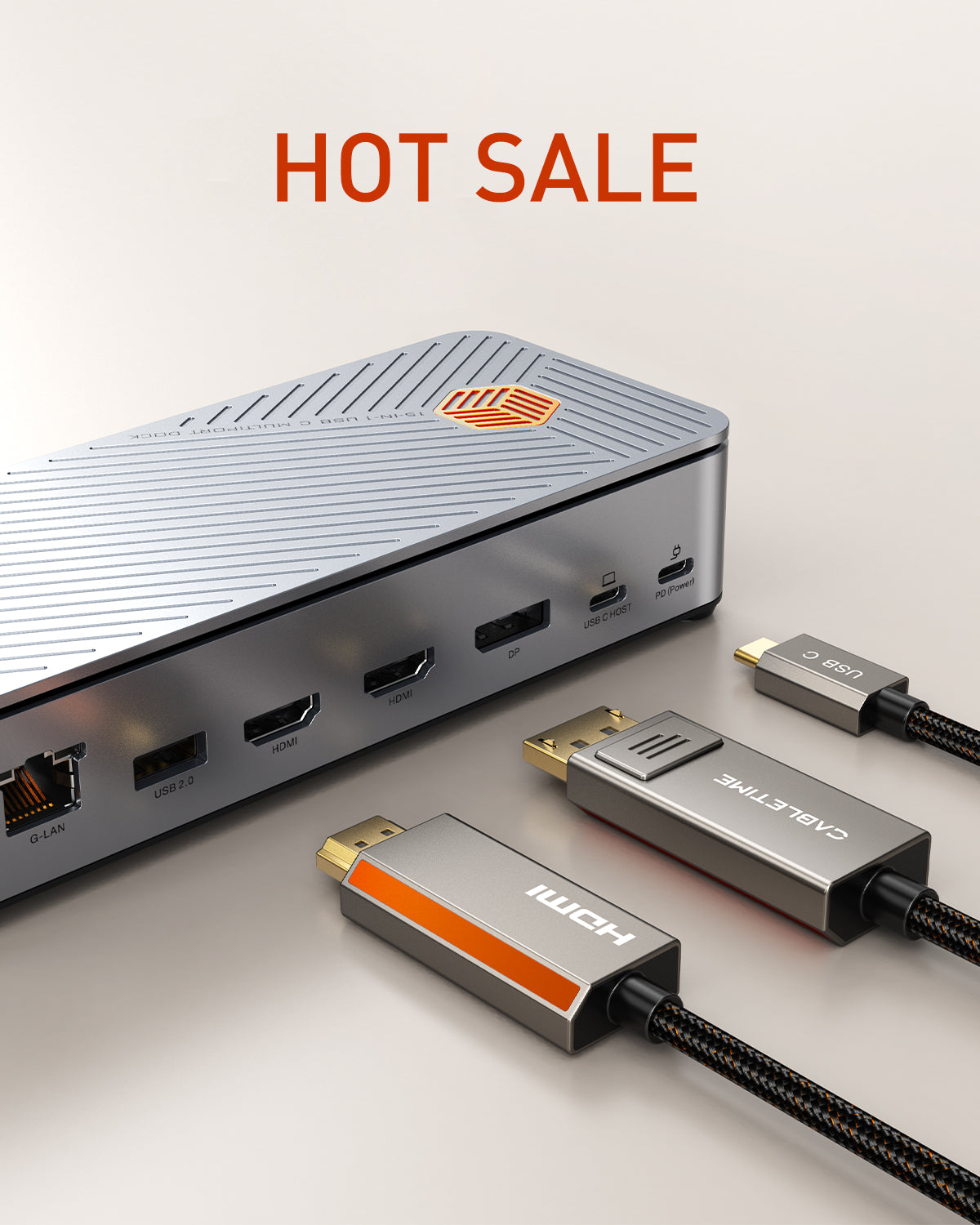
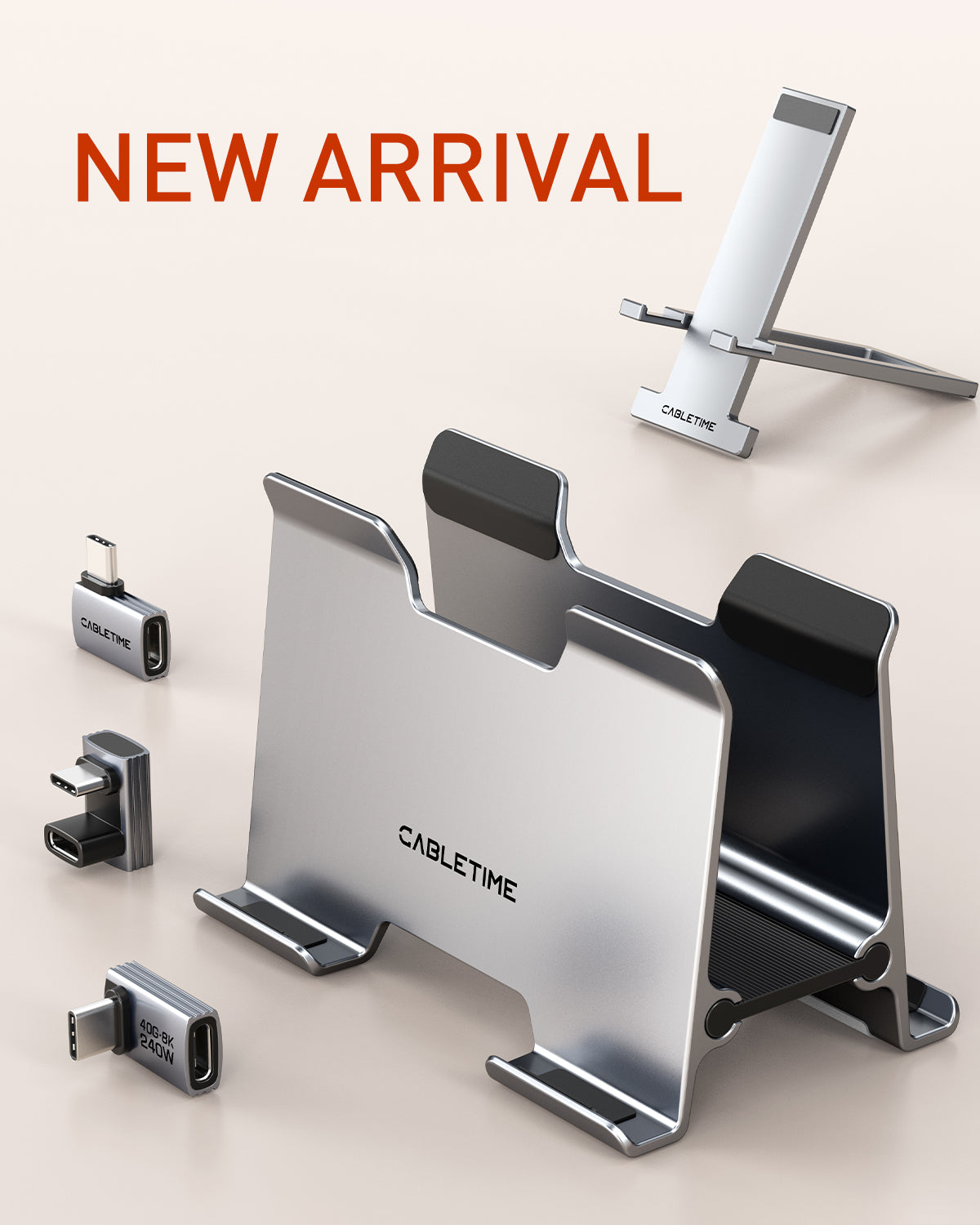
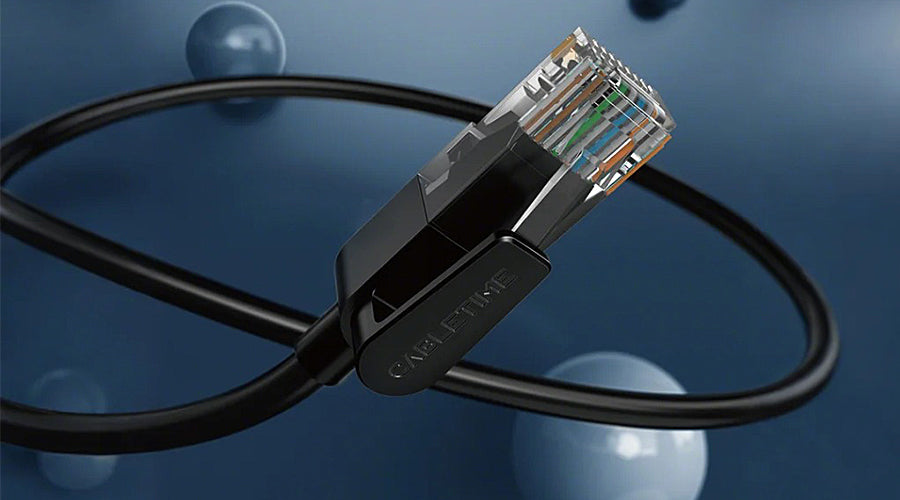
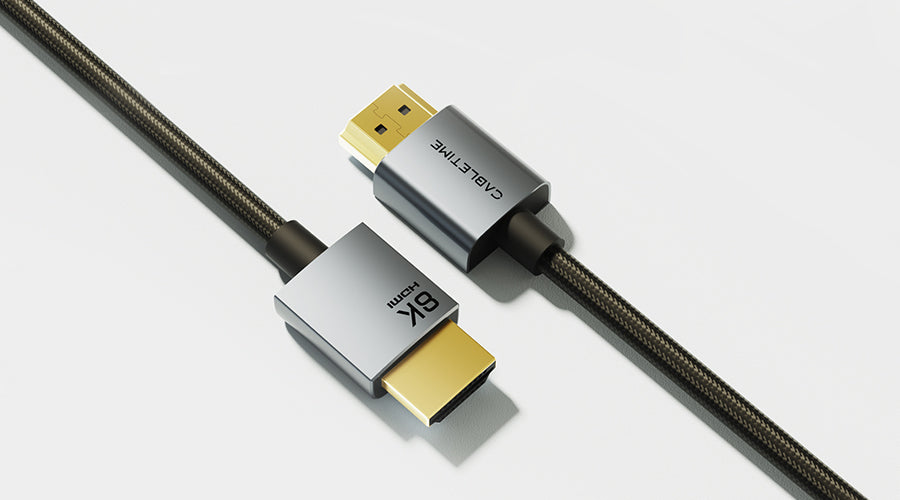
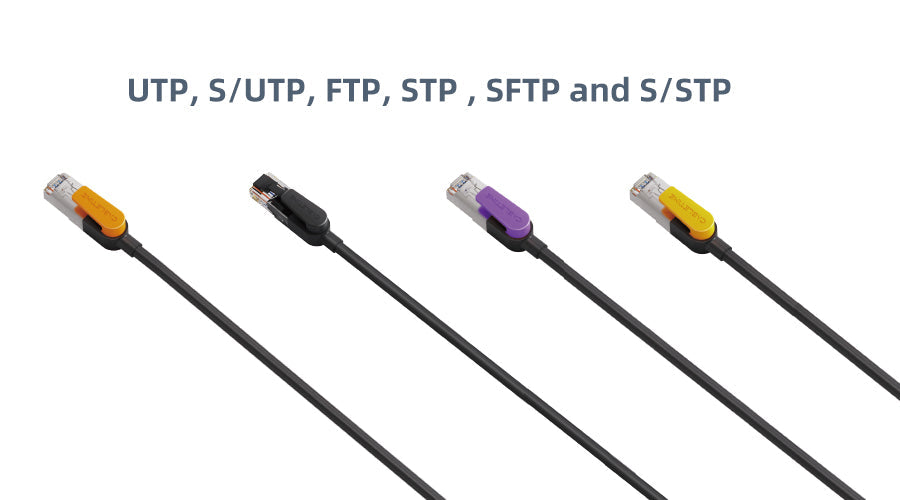
2 komentar
Khiter Mohamed
Technicien supérieur réseaux informatique
Network Cabling
This comprehensive guide to Ethernet cables explains the various types and their specific uses, from Cat5e to the latest Cat6a and beyond. It emphasizes the importance of choosing the right cable based on speed requirements, distance, and the environment. With practical tips on installation and performance optimization, this article is a must-read for anyone looking to enhance their network setup.
Tinggalkan komentar
Situs ini dilindungi oleh hCaptcha dan berlaku Kebijakan Privasi serta Ketentuan Layanan hCaptcha.